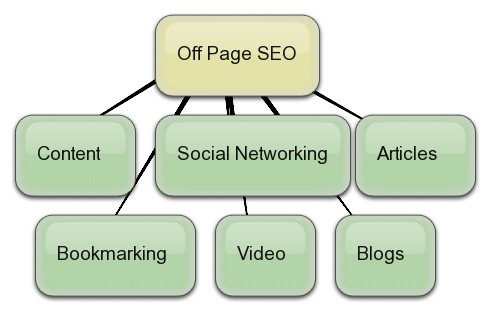

History of SEO
 The term “search engine optimization” was first used in 1997, according to Danny Sullivan, an analyst of the search engine industry. But even before that, people had already started to experiment with the concepts of SEO by messing around with keyword densities in their web pages. Modern search engines first came by 1994, with the emergence of Galaxy, Lycos, and Yahoo. Some forms of SEO were always present alongside the ‘world wide web’, which at its conception was just a collection of a few research pages, but it was in 1994 that companies really started to take the concepts of SEO seriously as the search engines were now becoming the backbone of internet trafficking.
The term “search engine optimization” was first used in 1997, according to Danny Sullivan, an analyst of the search engine industry. But even before that, people had already started to experiment with the concepts of SEO by messing around with keyword densities in their web pages. Modern search engines first came by 1994, with the emergence of Galaxy, Lycos, and Yahoo. Some forms of SEO were always present alongside the ‘world wide web’, which at its conception was just a collection of a few research pages, but it was in 1994 that companies really started to take the concepts of SEO seriously as the search engines were now becoming the backbone of internet trafficking.
At this time, the only thing webmasters had to do was to submit their pages to search engines, and over-submit them to get a good ranking. People started manipulating this system because there was no complex algorithm to check a page’s reliability or relevance. All webmasters needed to do was put in enough keywords in enough density and they would get a first page ranking on any search engine. This resulted in a lot of spamming because a lot of websites had no relevance whatsoever to the keyword that was searched for, they were shown on the front page only because they had irrelevant keywords in the page, and therefore search results became highly unreliable.
By 1997, the first algorithm crackers came to surface. They cracked all 35 parameters of the then used Excite’s algorithm and could now very easily get their websites in the top 10 of the search results.
The Shift in Strategy:
The search engines started getting into trouble, using very basic on page services like keyword count to rank pages with no further algorithms or techniques. They needed to find other ways to make their results more relevant while making it easier for the user to get to a page of quality. Search engines started employing the use of off page factors like link pop and back-links as determinants for ranking pages, and it became harder for the crackers to get past these new factors.
Alta Vista was the forerunner among search engines at this point, with the rest of the following evenly distributed between the rest. Even with the use of new algorithms, black hat SEOs found ways to abuse them.
The Arrival of Google:
September 4, 1998, Stanford grad students Larry Page and Sergey Brin found Google. Google employed a new algorithm by the name of PageRank which measured the quality and quantity of website’s inbound links to determine site rankings. This resulted in better results and attracted a very large number of loyal followers and by 2001, others like Lycos, Excite, Alta Vista had been almost completely abandoned because they couldn’t keep up.
By 2004, Google, MSN, and Yahoo! were the only three search engines left. They started using undisclosed algorithms to rank pages so people could not misuse them anymore. The keyword spamming SEO era was long gone by now. Webmasters now had to provide actual quality and come up with more creative ways to get a high ranking. By 2005, Google started providing personalized search results and now it has come to a point where 70% of the users are Google loyal. SEO, today, is pretty much a direct line with Google, if you want to generate internet traffic for your page. SEO campaign have become more difficult and actual work and quality is required now to get your website a high ranking on the world’s largest search engine, which is not that easy to manipulate.

